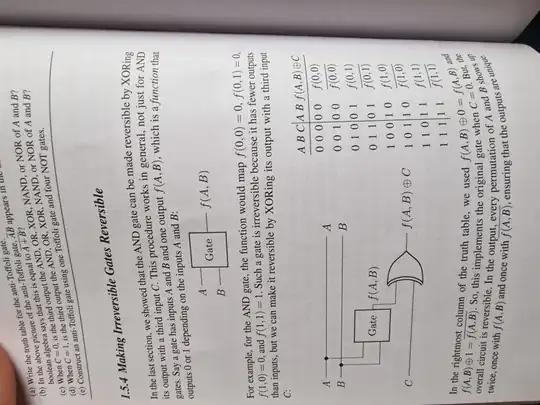Looking at his book, and am obviously new to studying this. Could someone help explain to me how the truth table is valid here?
To my understanding, when $C=0$, the circuit behaves like a reversible AND gate, and when $C=1$, it acts as reversible NAND gate. So, my question is, shouldn't the output on the truth table be $f(1,1)$, when $A,B = 0$ and $C=1$?
Obviously, I'm wrong, but can't understand why.
